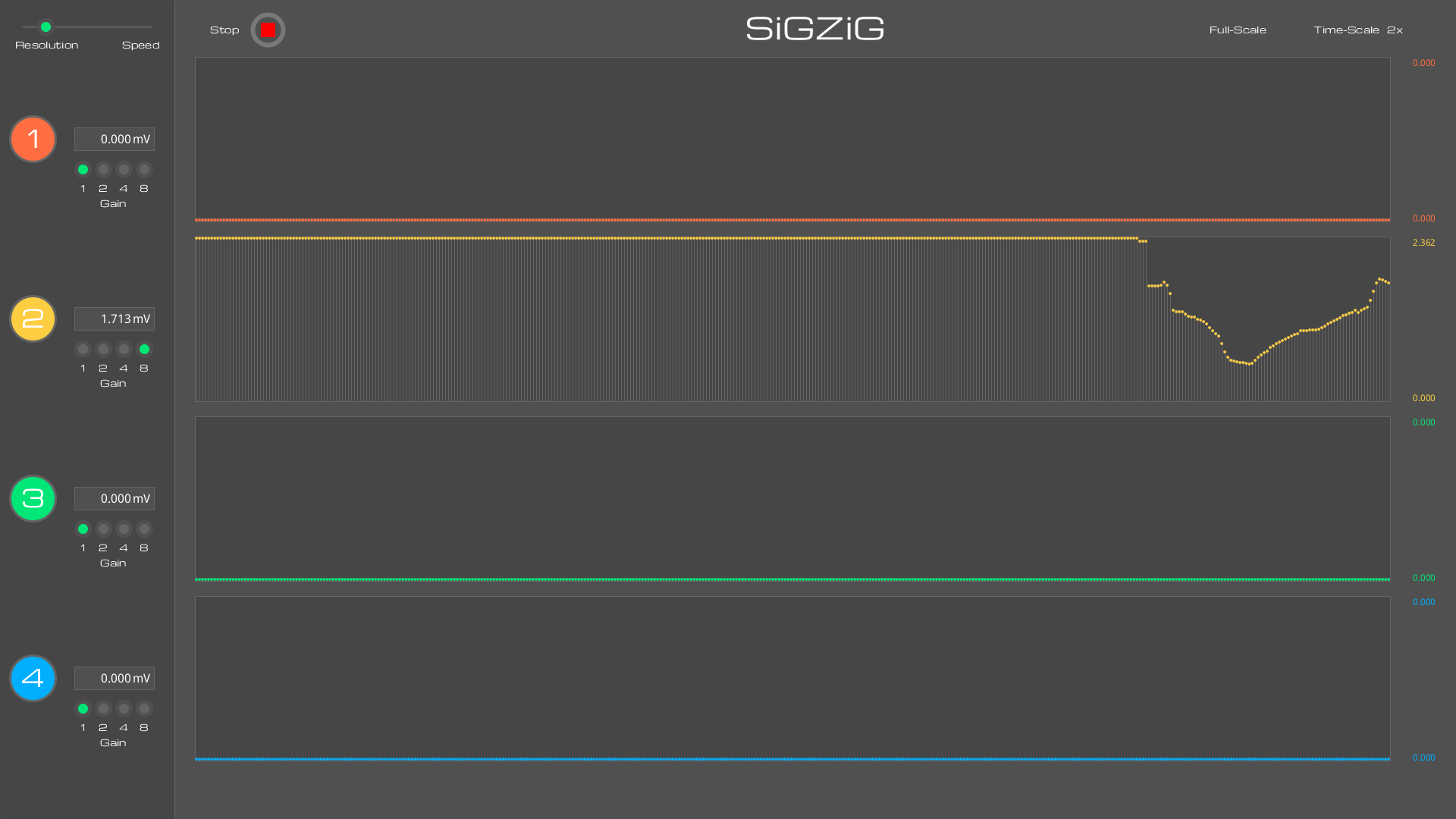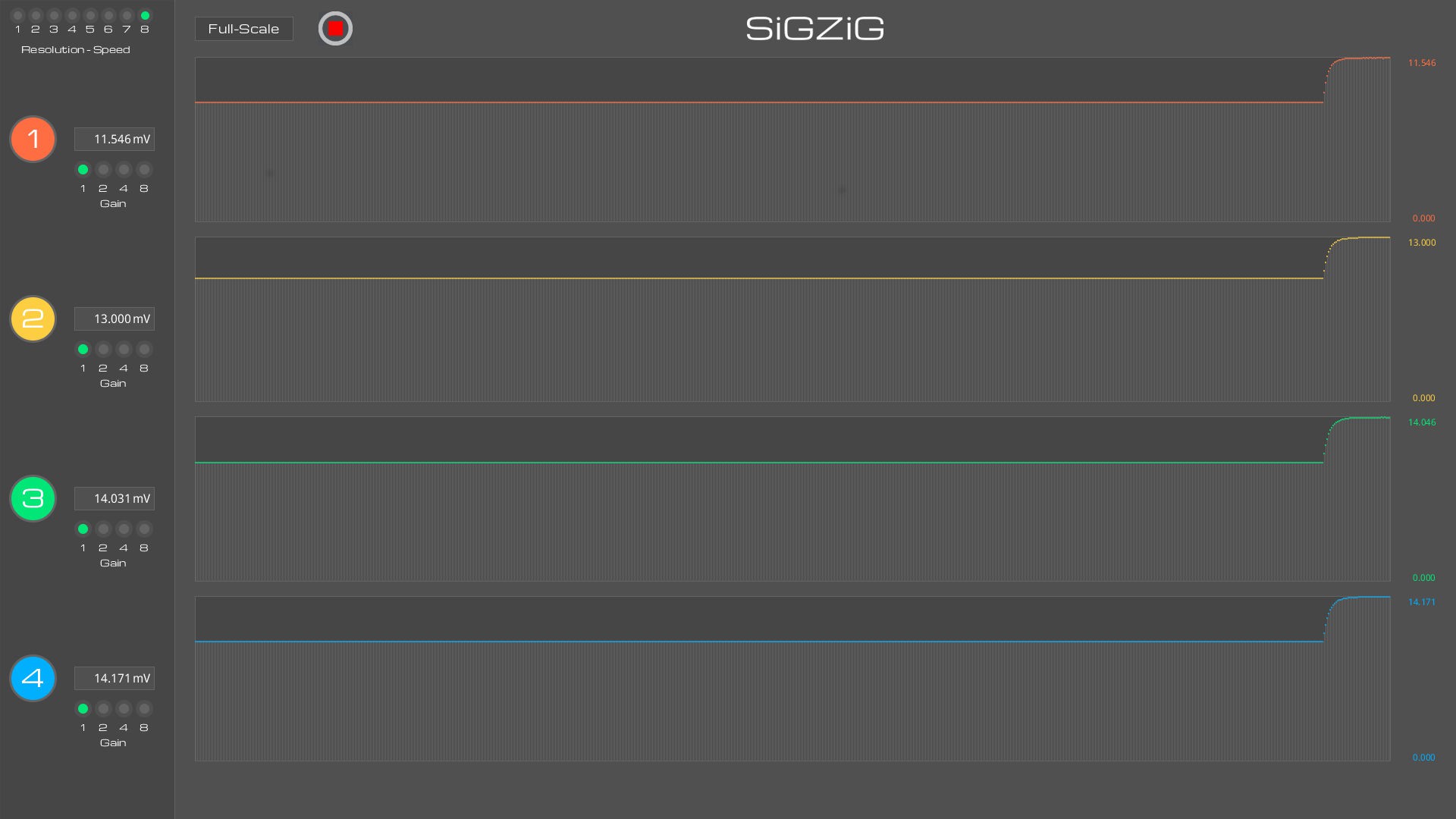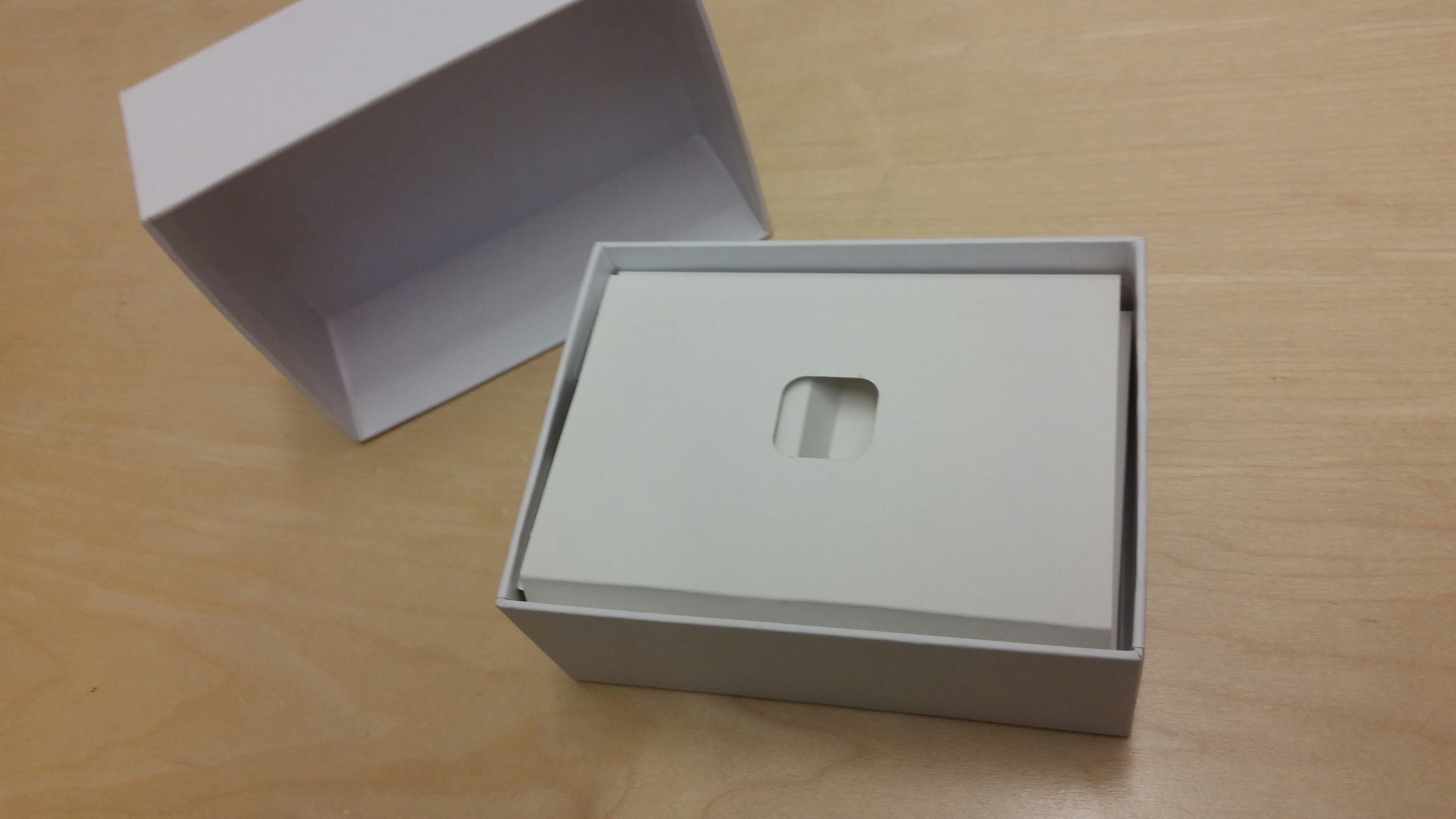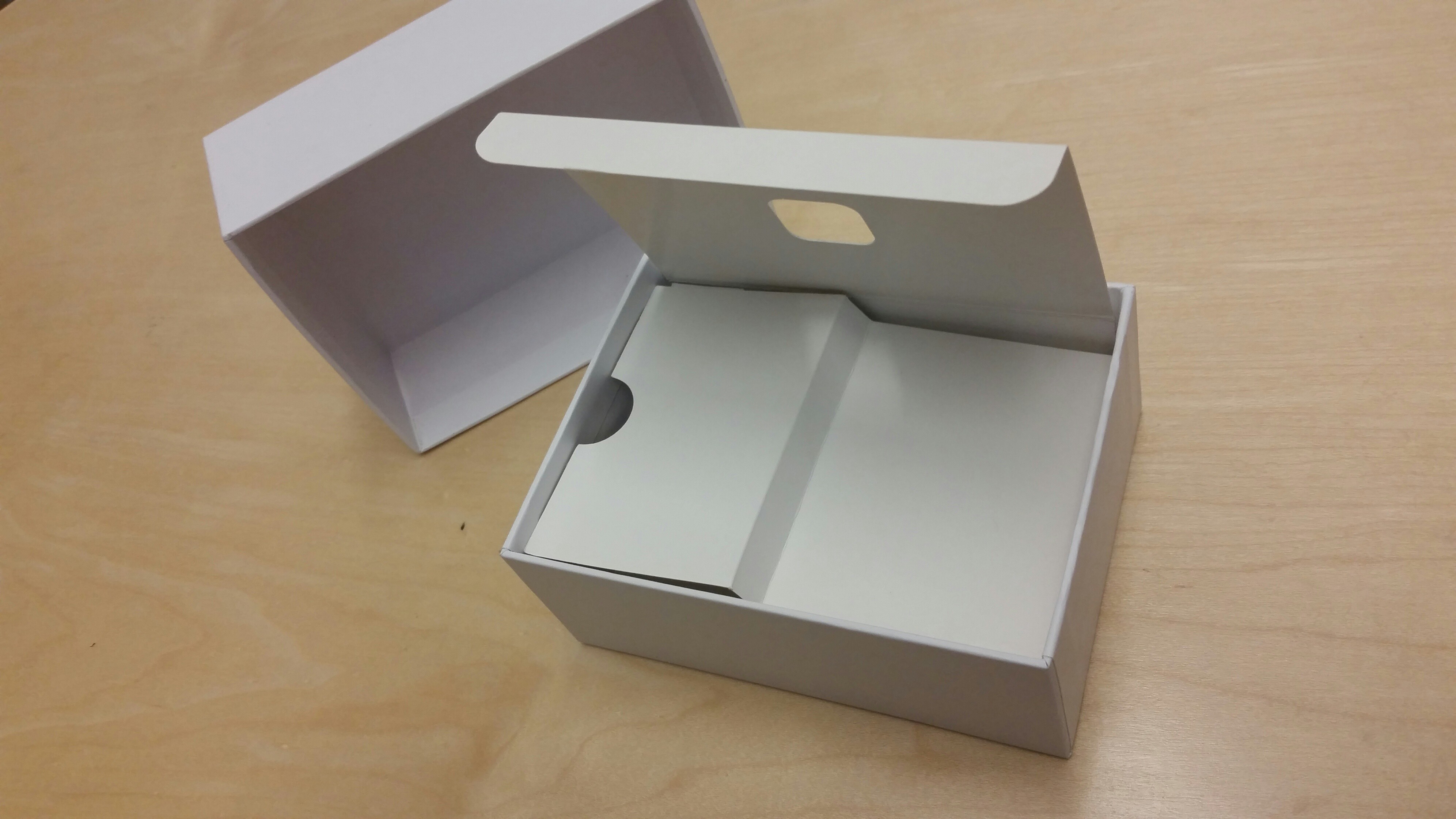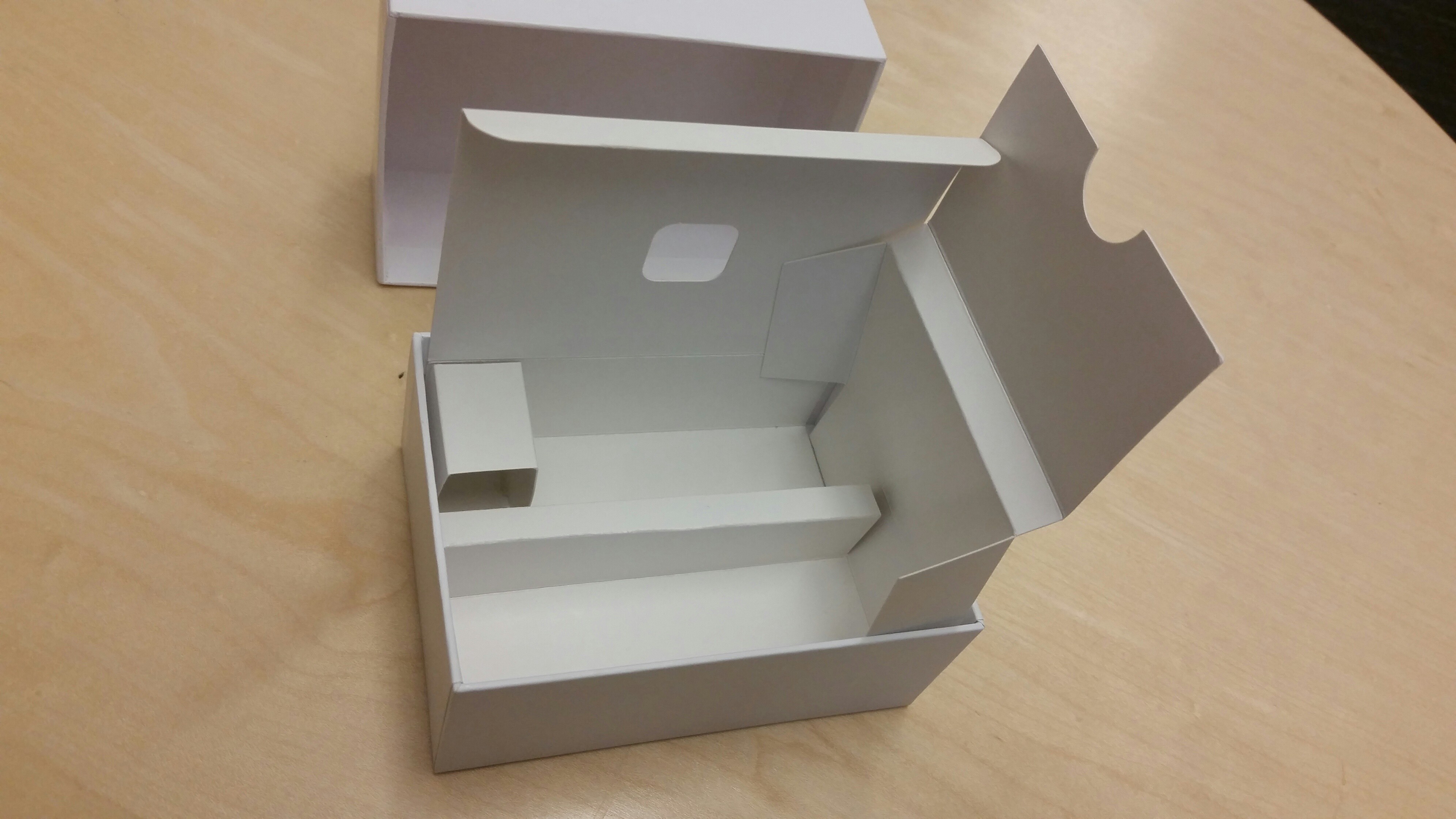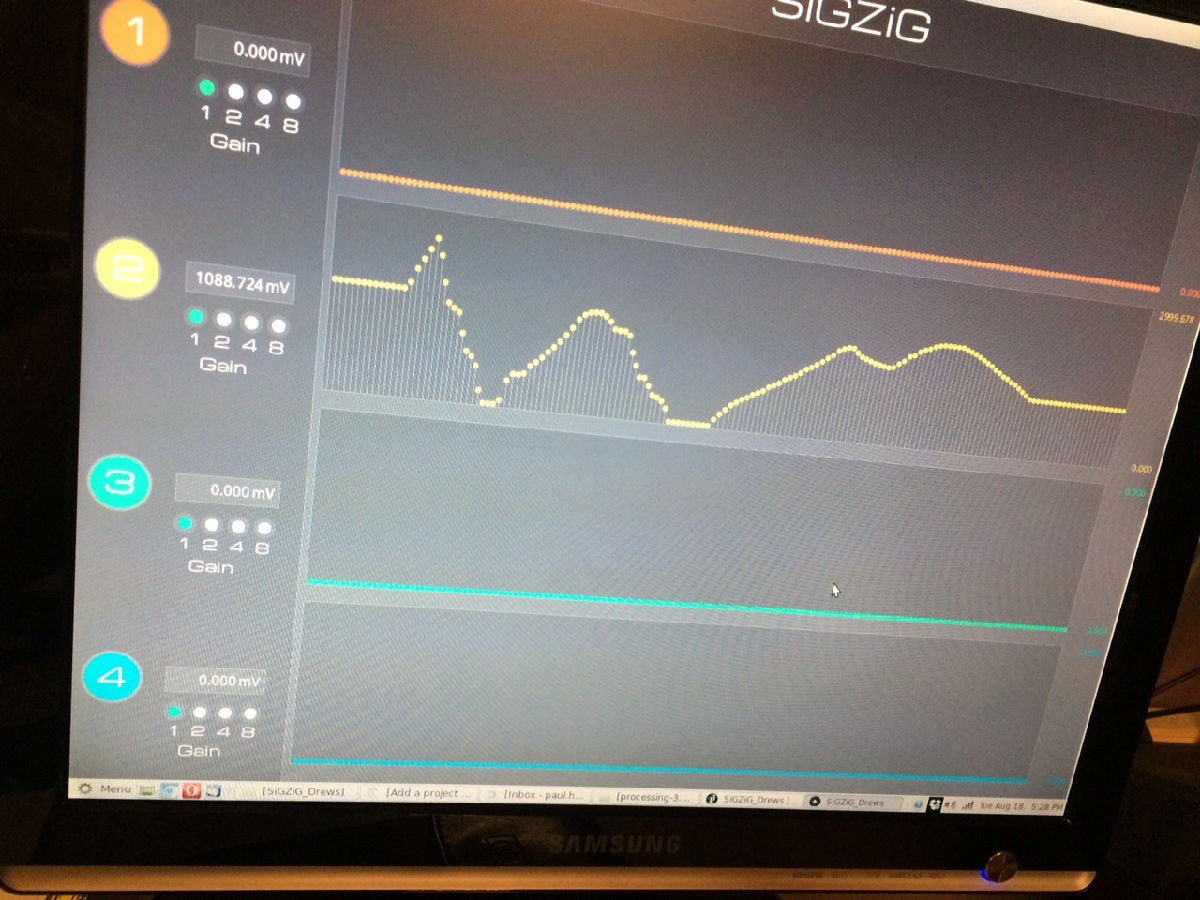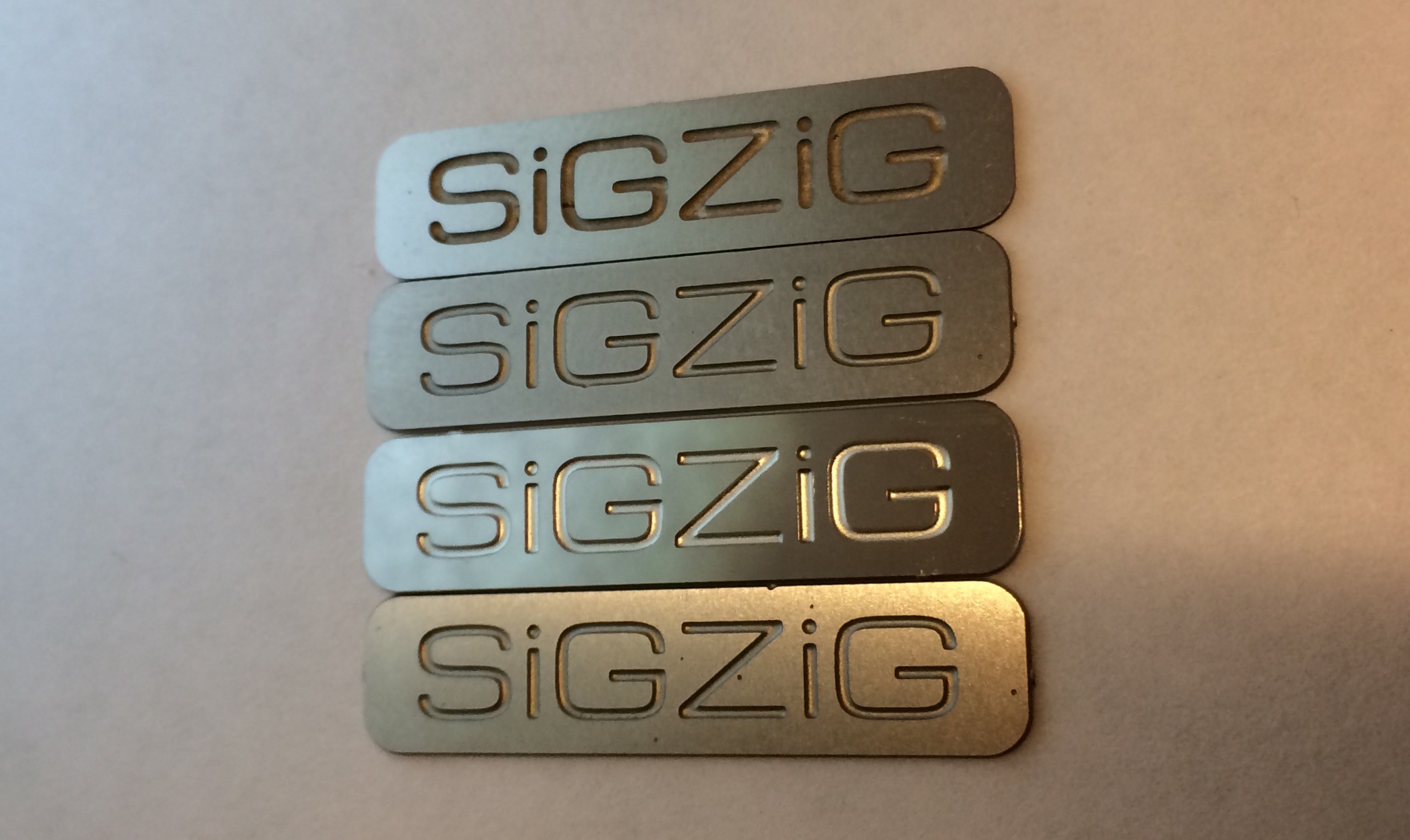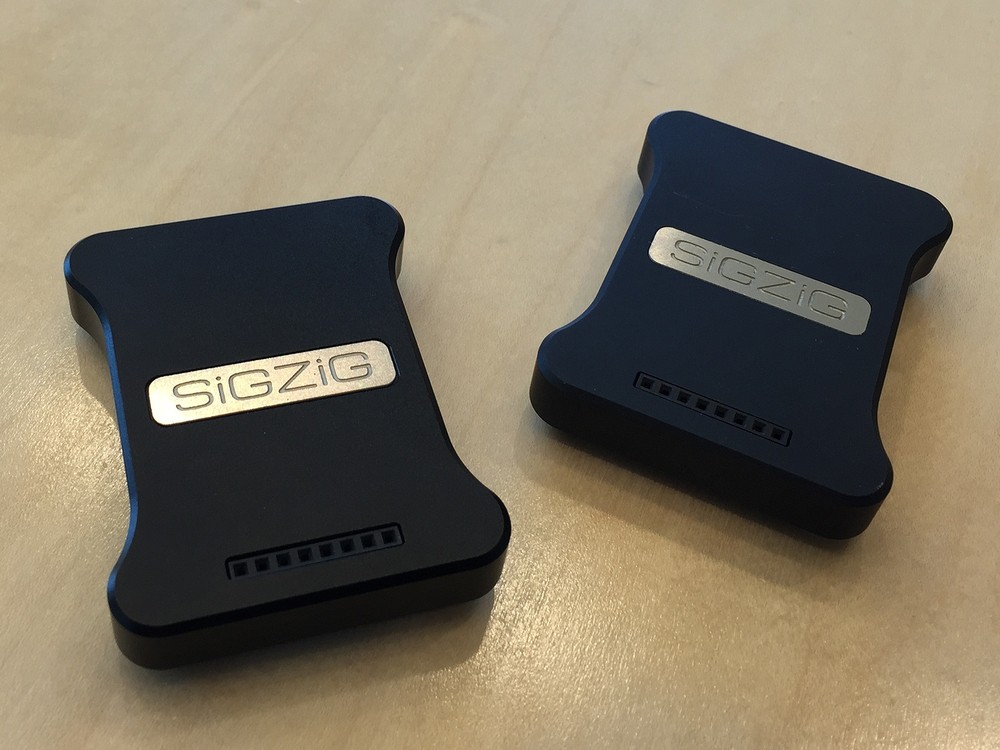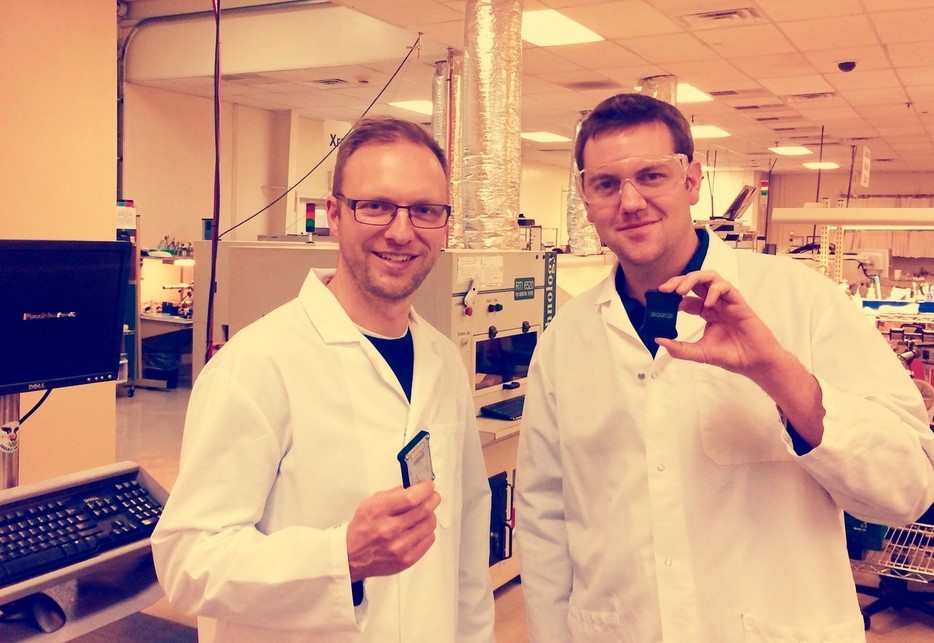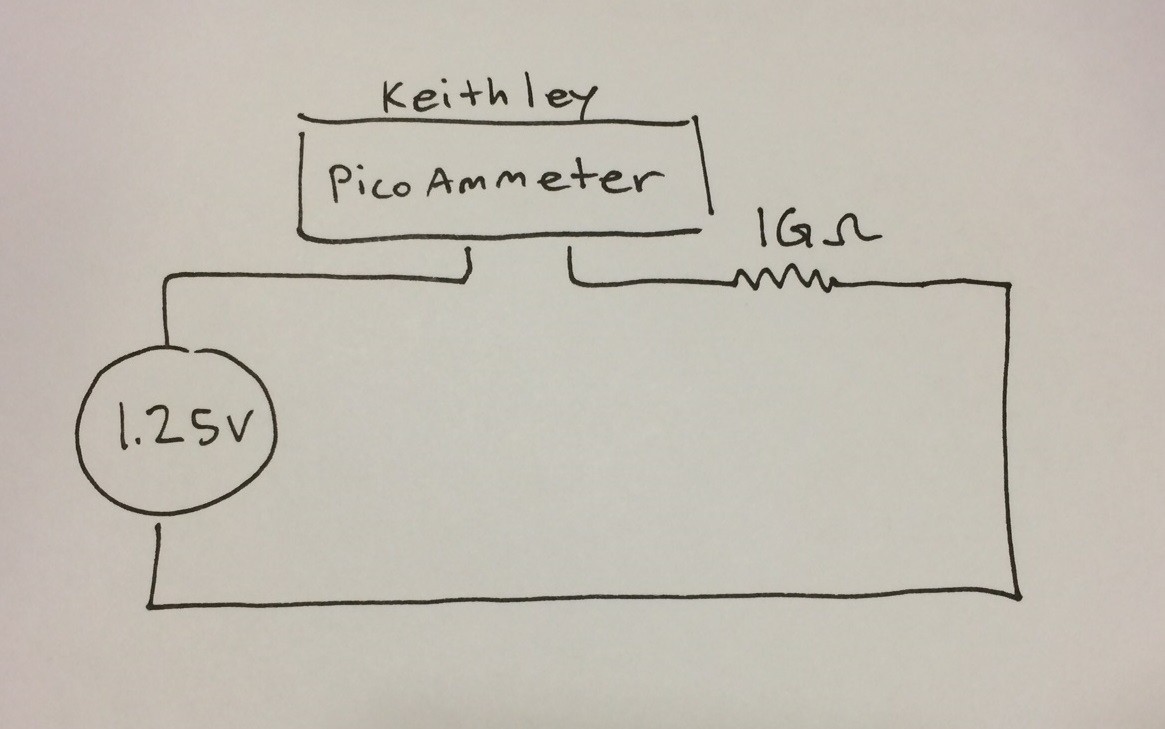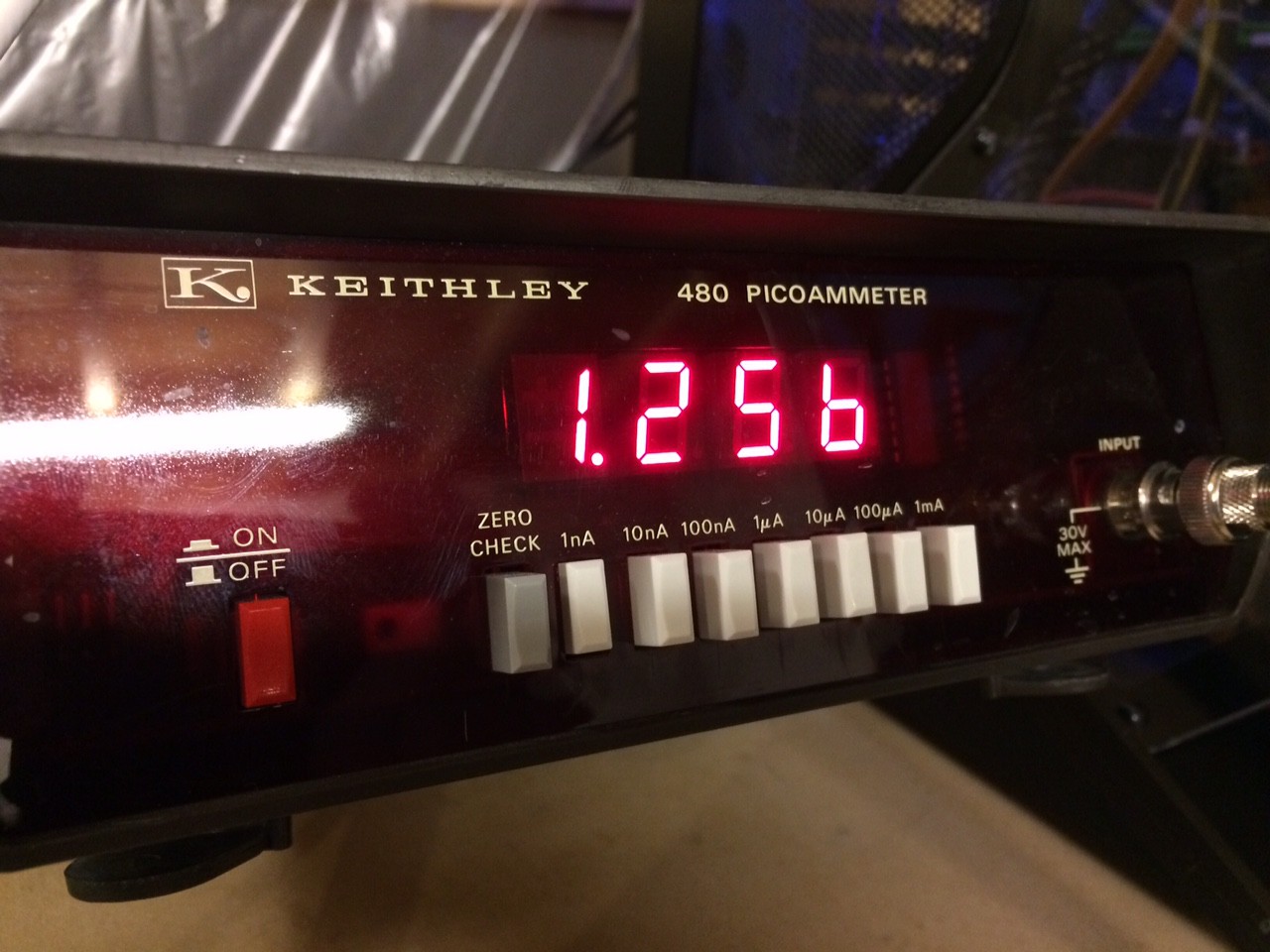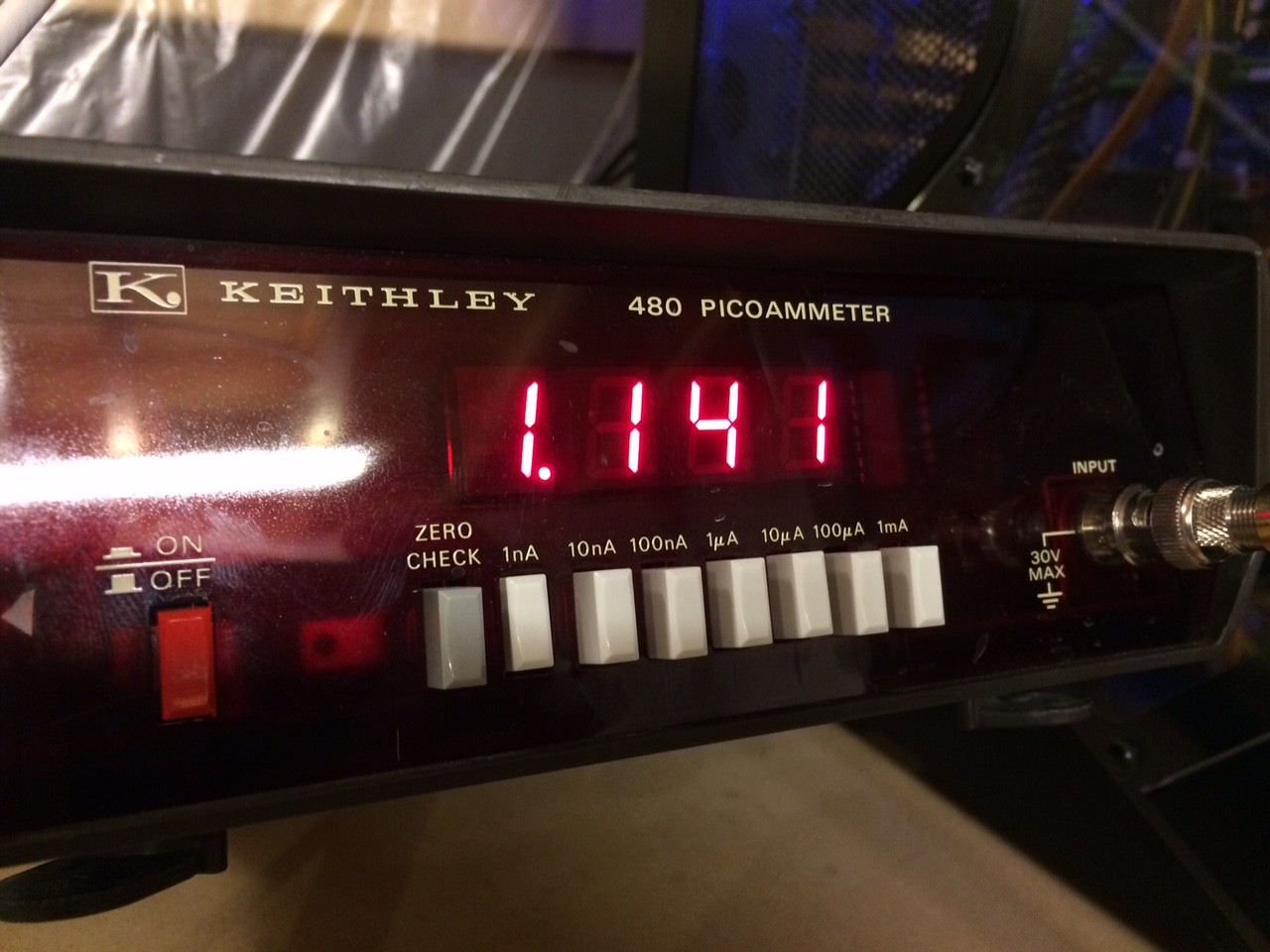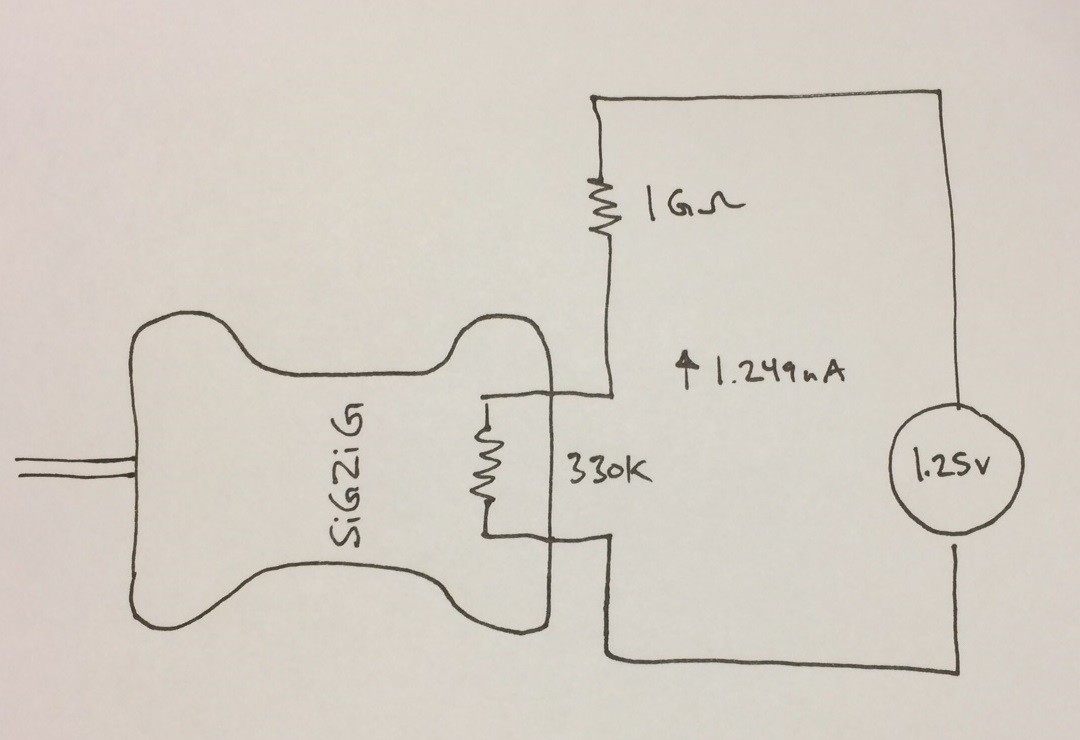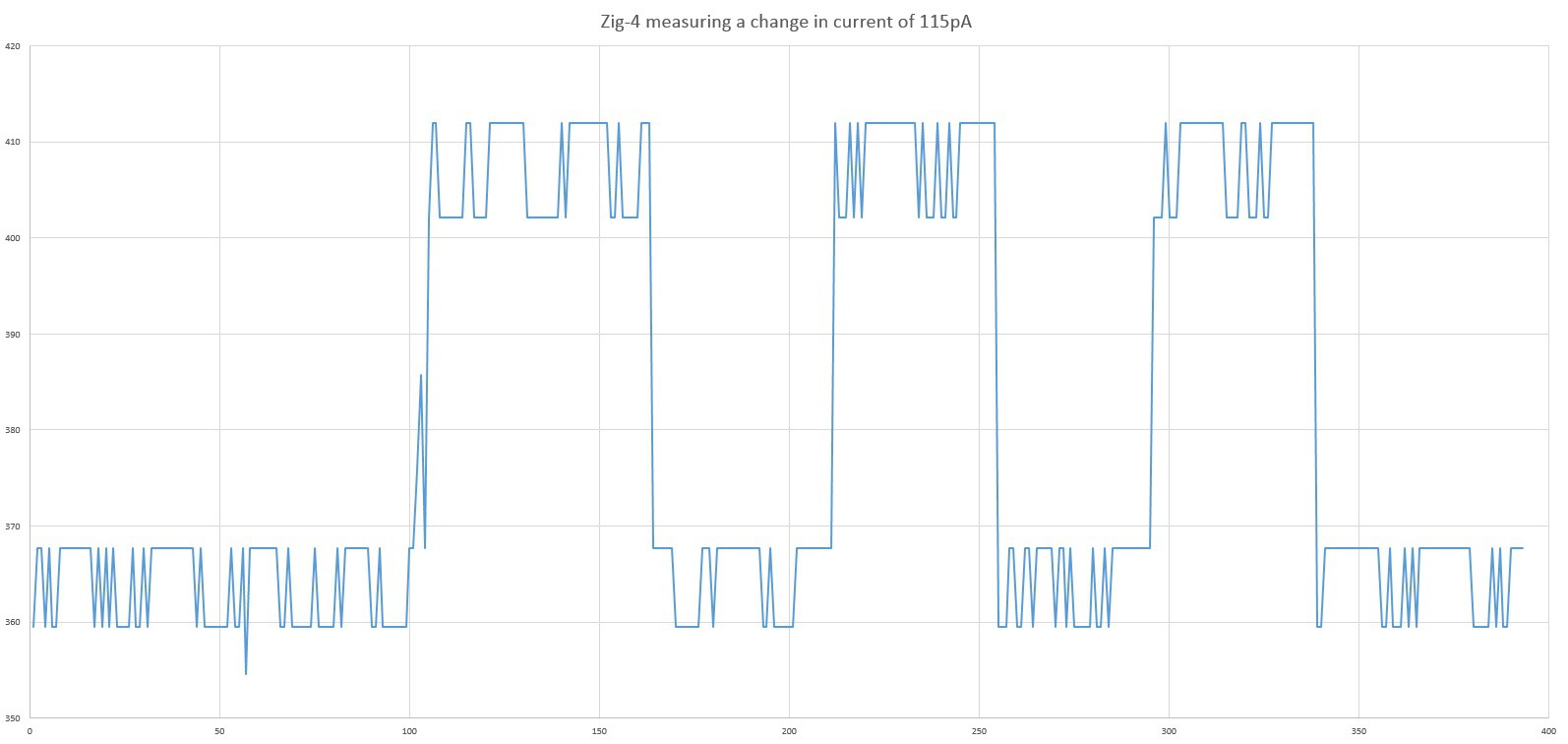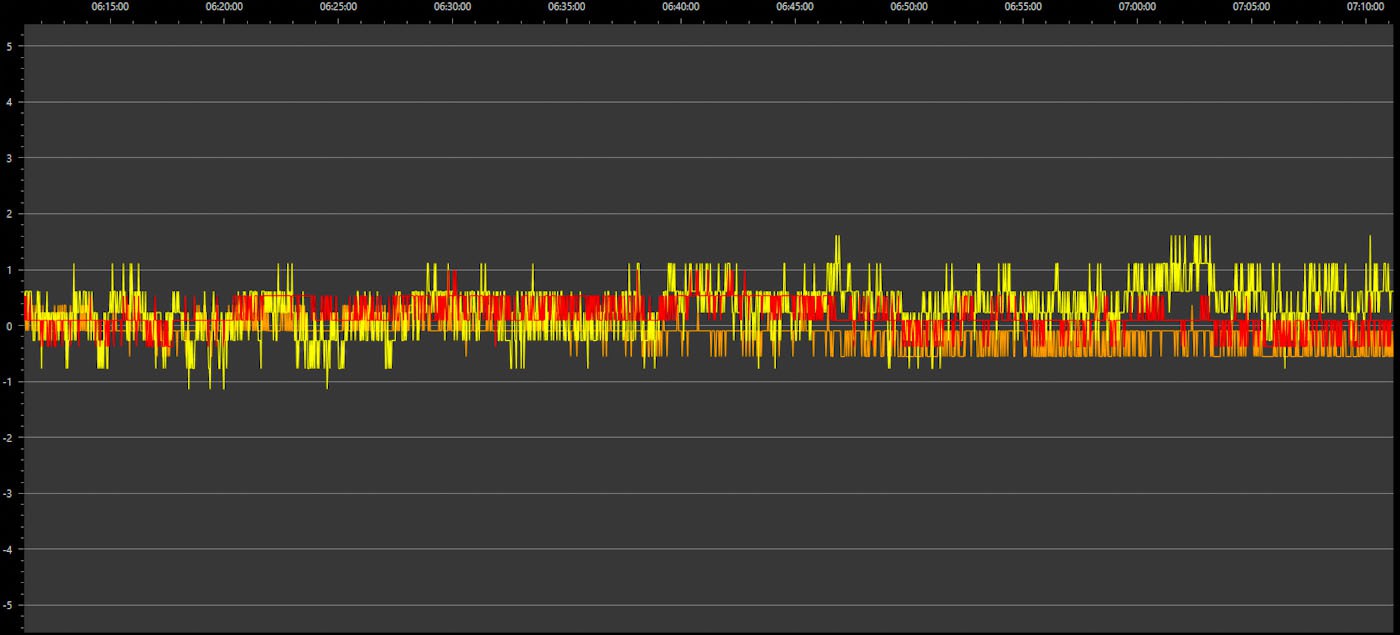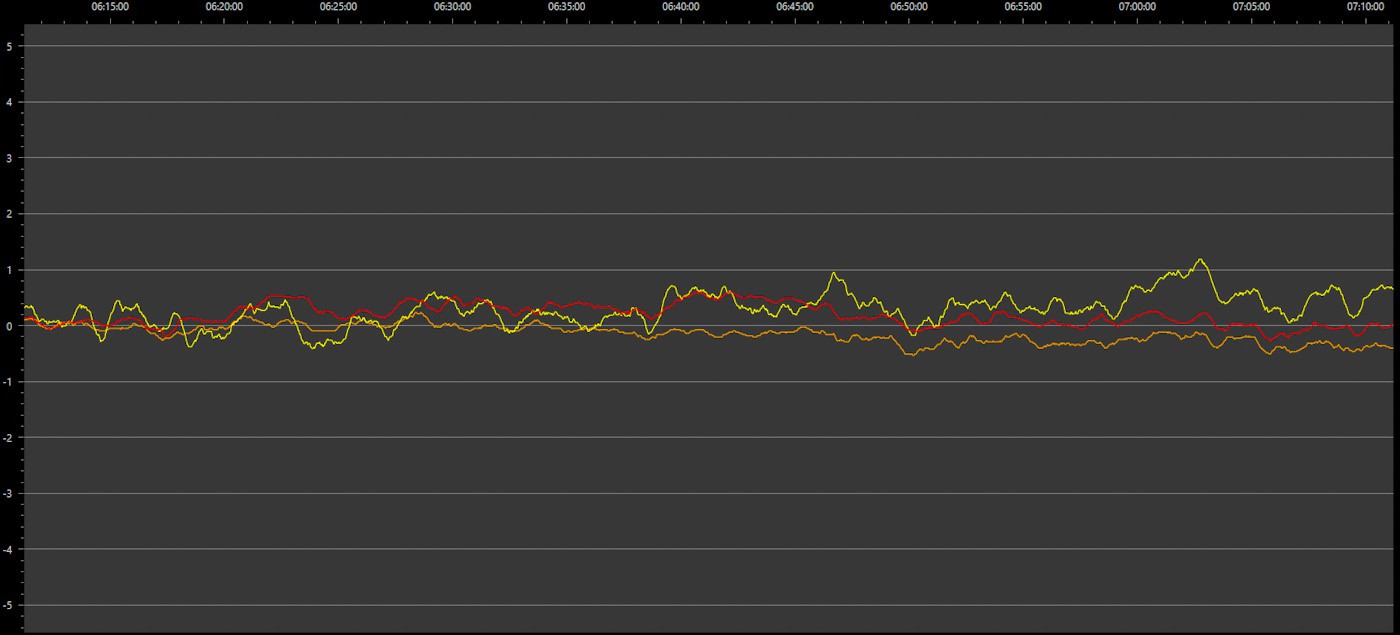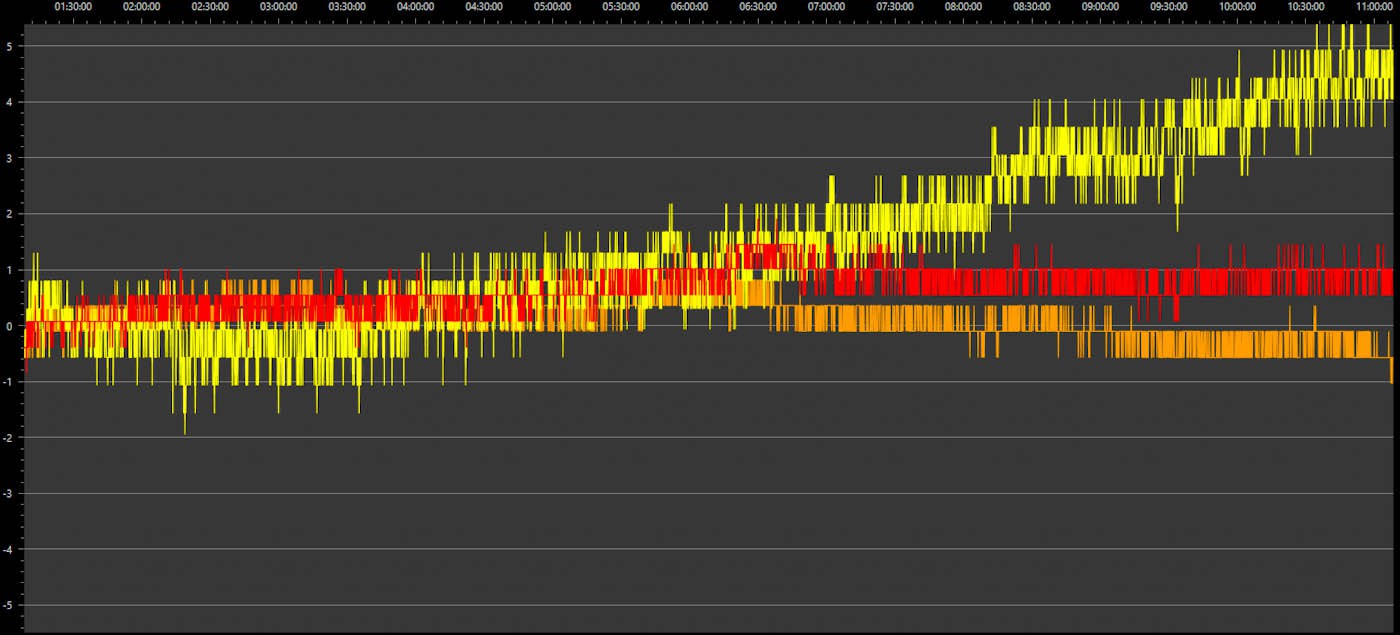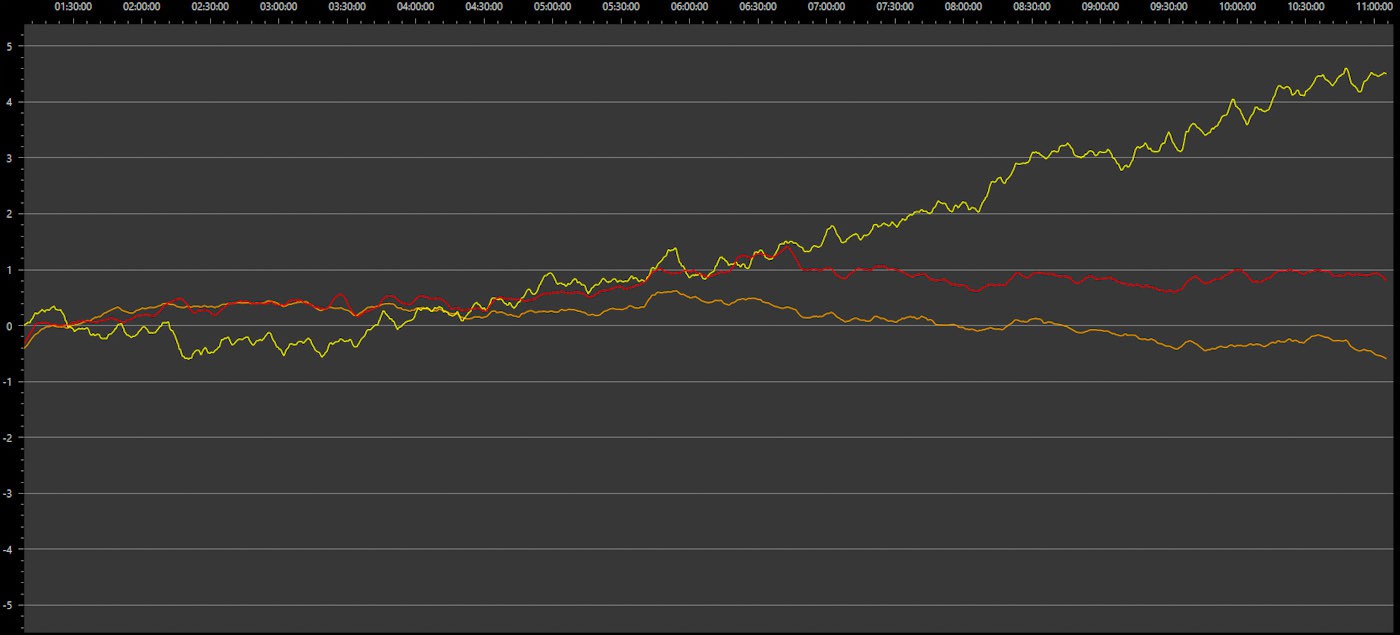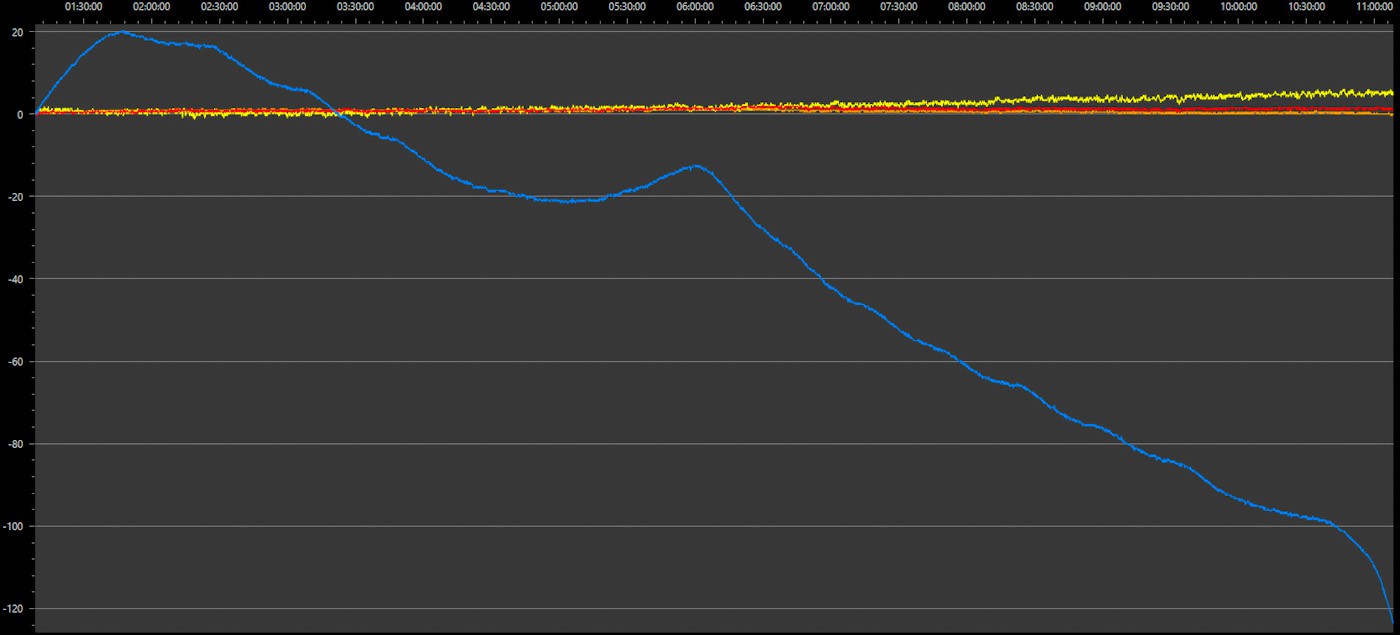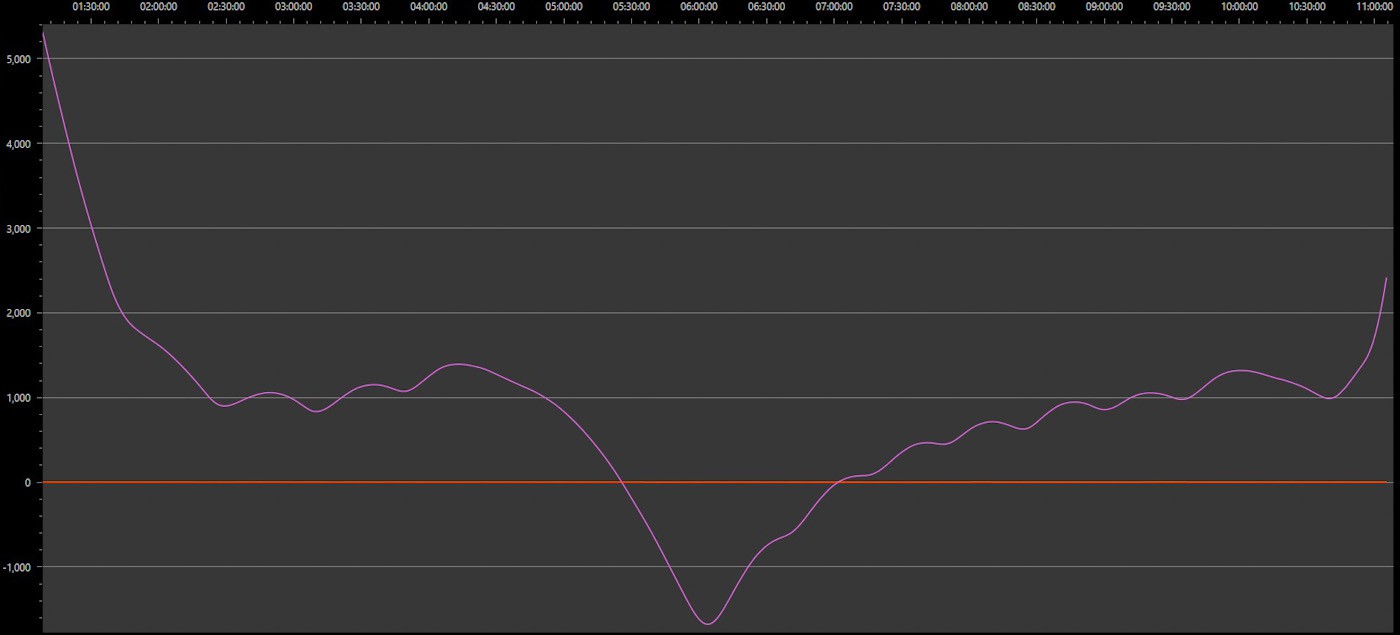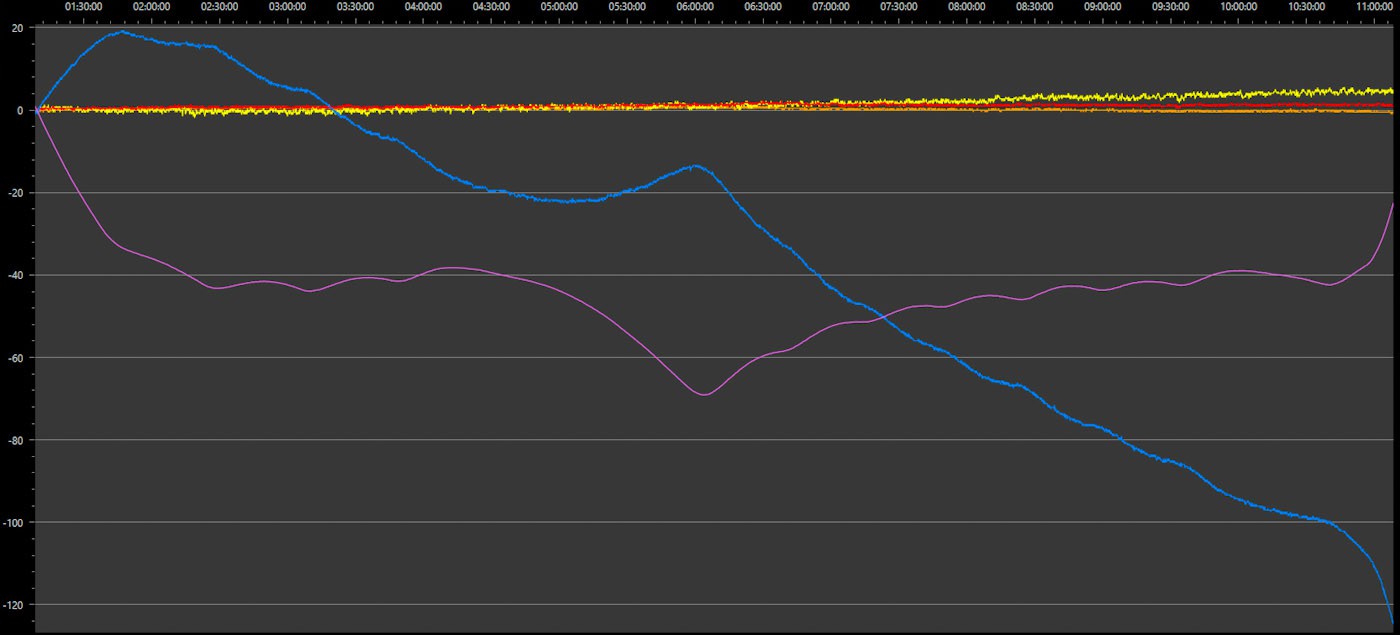-
Updated Data Logging Software Released
08/24/2015 at 17:49 • 0 commentsThis past week we spent a lot of time fixing bugs in the Zig-4 plotting software. You can download the data logging software on our website.
Our previous project log describes our approach to software so I'll just let you know what was fixed in the latest version.
Updates:
- Resolution/Speed slider now works
- Added zoom to the time scale
- Graphical improvements
- Detects Sigzig more reliably
Check out the latest screen shot here of version 0.3a software.
![]()
-
Open Source is Amazing! Thank You @ProcessingOrg
08/20/2015 at 21:58 • 0 commentsWe just uploaded to our website our earliest attempts at creating an open source version of our full featured SiGZiG software that is used to interact with and collect data from our data loggers. This version will be limited to The Zig-4 hardware for now but may be adapted for more hardware in the future. We decided to take advantage of the Processing IDE and libraries to make this simple program and want to give a big thank you to all the hard work that is being done at processing.org. It is only because of the ease of use of processing that a simple program written by our engineer for logging during testing could come to rival our closed source (and expensive to make) version.
It is not without bugs and glitches right now but we will be updating it frequently and will do some major fixes when our programmer gets back from vacation.
We are also still working on some visual tweaks but it is coming along as you can see below:
![]()
-
So, what's in the box?
08/18/2015 at 23:47 • 0 commentsNot too much technical information in this post, but it still involves something that is very important to getting a product shipped...packaging! I always love getting a package in the mail and opening it up to see all the goodies inside.
Because this is a Hackaday Best Product entry, we wanted to show that this project is closing in on being an actual product ready to ship. When you open up a package from us, you will find a white box that contains the following:
- Sigzig (of course)
- 3 foot micro USB cable
- Four 8 inch pin-out cables
- Microfiber carrying bag
Samples of these items were recently received at our location! You may be thinking, "why are you posting pictures of a plain white box"? Well, we are super excited to see the whole product and packaging coming together! Graphics for the box are being created so that these white boxes will have some branding in the future.
![]()
![]()
![]()
-
Processing Sketch to Collect Data
08/18/2015 at 23:42 • 0 commentsWe will be releasing a processing sketch soon for controlling the Zig-4 as well as collecting and displaying data from it. All of you are more than welcome to download it and give us your feedback. The idea behind making this program/sketch is that it gives you a base program to start from that you can then tweak and change to your liking or specific purposes.
-
It's not Just a Label
08/18/2015 at 23:13 • 0 commentsIt's not just a label, it is the label that your SiGZiG will don for the rest of its life. We are being extremely picky about the choice of supplier. The label is chemically etched stainless steel and we are looking at things like the quality of the etch (of course), the depth, the finish of the stainless steel (brushed, polished, etc.) and even the location of the tabs that are used to hold it during processing. Definitely not all suppliers are created equal as you can see in the comparison of various versions below.
![]()
-
Demo Video
08/18/2015 at 21:15 • 0 commentsHere is our video demo for the HackaDay best product entry (this is now posted at the top of our project details page). We made this in Paul's basement at 2:00 a.m. in order to make the deadline.
Unfinished basements are cold at night. Hope you enjoy it and that this gives you a better idea of SiGZiG.
-
Cases Update
08/18/2015 at 21:10 • 0 commentsCases are close to being finalized. Small changes, but we are detail freaks over here. The case on the left is our latest version. Slightly deeper black, bevel around the logo, and took care of some screw thread issues.
![]()
-
Manufacturing
08/18/2015 at 21:06 • 0 commentsWe've been touring assembly shops to find a manufacturer for our SiGZiG electronics. We looked inside and outside of Utah and landed on a good local shop so we can keep an eye on progress.
Here is a quick snapshot of our tour.
![]()
-
Using Input Impedance to Measure Current
08/18/2015 at 05:59 • 0 commentsInput impedance on measurement equipment is usually kept as high as it can in an effort to prevent loading down the signals the equipment is measuring. For example most general purpose digital multimeters aim for an input impedance of at least 1M ohm. The Zig-4 has a lower input impedance of 330k ohms but this is still high enough for many/most situations. That being said it is still important to understand input impedance and its affect on your measurements.
In this post I thought it would be fun to actually take advantage of the 330k input impedance of the Zig-4 as a sort of low current sensing.
The goal: To see if we can use the Zig-4 to detect a change in current in the very low nA range.
Even though most everything can be calculated, I thought it would also be nice to back up some of the calculations using actual measurements. I wanted to use a recently acquired Keithley 480 Picoammeter and on the lowest setting so the first order of business was generating a really small known current.
Using a 1G ohm resistor and a 1.25V voltage reference we can generate a current of 1.25nA.
![]()
The resistor is 1% and the voltage reference is not exactly 1.25V plus the meter could be off a bit... but overall that's close enough.I then added a 100M ohm resistor in series with the 1G ohm resistor effectively lowering the current to a calculated 1.136nA
Again, close enough.Now lets swap out the Keithley 480 picoammeter with the Zig-4 and do the same change in current to see what kind of signal we get. The current in both cases will be a little lower because now there is the additional 330k of the SiGZiG.
Above is the setup except I switched back and forth between the 1G and the 1G+100M ohm resistor. Below you can see the signal I was able to get. The Zig-4 does have a small amount of programmable gain, so in all fairness the below plot is with it set to a maximum gain of 8 giving it more bits for the range it was measuring.![]()
![]()
So by using the input impedance of the Zig-4 to our advantage we can actually use it to monitor small changes in current down to the sub nA range. In the case above we were able to clearly pickup a change in current of only 115pA (113.5pA to be exact).
-
Zig-8 Prototype Testing
08/14/2015 at 05:59 • 0 commentsMost of our focus has been on the Zig-4 lately but I finally found some time to play around with one of the Zig-8 (24 bit, 8 channel) prototypes to do some noise floor and short-term drift test. There is still a lot of work that needs to be done, but the results where still worth posting. Remember this is a Prototype!
The setup of the test was basically take three pretty good voltage references, put them on the bench and monitor them along with a temperature sensor and a silver oxide battery (one of the original voltage references) for 10 hours once a second. Not overly scientific but educational nonetheless.
Below is a plot of the three Vref's. This is a 1 hour section after about 6 hours of warmup (you can see the time stamp at the top). Even though a sample was taken every second there is a little aliasing going on with the way the software displays all the data so you don't actually see every point (sorry).
The scale on the left is in µV and all the plots have been zeroed out for easy comparison. So what do we see? Well we are basically looking at the combined noise and drift of the SiGZiG Zig-8 prototype with the noise and drift of the 3 voltage references. And it looks like, at least over 1 hour, that the combined noise and drift stays pretty much within +/- 1µV. So what part of the noise is from the Zig-8 prototype and what belongs to the voltage references?... well the short answer would be that generally any signal common to all the readings is from the SiGZiG. That being said there are other things in common, like temperature (for good or bad).![]()
Lets do some averaging to see if we can better pick out the common signal.
The above data has been smoothed with a running average of 10 samples. You can kind of make out parts that are in common to all three plots.![]()
Okay, this 60 min chunk is getting boring, lets look at the whole thing.
As you can see not all voltage references are created equal. Now if you look at the yellow plot the real question is which voltage reference is drifting, the one being measured or the one in the Zig-8? Well if I was only measuring the yellow one it would be pretty hard to say, hopefully now you can see the wisdom in measuring more than just one supposedly great voltage reference. By monitoring more than one it becomes a statistics game and in this case the yellow one is the odd one out.![]()
Applying averaging again and you can start to make out the commonality between signals. However looking at what is common is still not a perfect method for recreating the noise and drift signature of the SiGZiG because there are slight variations between each channel as well as the fact that each channel is not sampled at exactly the same moment in time. Overall though it still gives a much clear picture than just monitoring a single voltage source when down at these small levels.![]()
So how did the silver oxide battery compare?
Actually not that bad, we are talking 140µV of drift over 10 hours. Even so it definitely puts the others in perspective.![]()
And what about temperature?
I noticed some of the changes in temperature seemed to match up with variations in the voltage of the silver oxide battery.![]()
After scaling and overlaying you get this
![]() If you had a good enough data logger you could almost use a silver oxide battery as a temperature sensor!... okay no you couldn't but you can obviously see it is affected by temperature.
If you had a good enough data logger you could almost use a silver oxide battery as a temperature sensor!... okay no you couldn't but you can obviously see it is affected by temperature.
Low-noise, Easy-to-use Analog Data Logger: SiGZiG
Captures signals at the lowest noise levels with very low drift. Precise and easy to use. It’s all your data logging fantasies come true.
 Sigzig
Sigzig